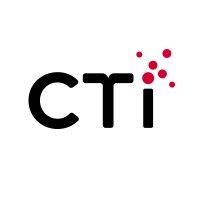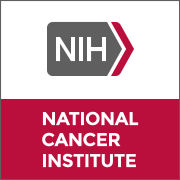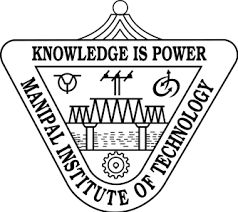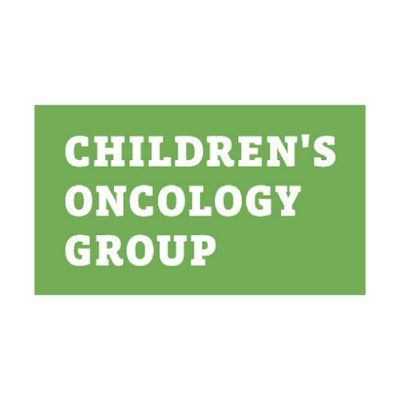预约演示
更新于:2025-05-07
Juvenile Myelomonocytic Leukemia
幼年型骨髓单核细胞白血病
更新于:2025-05-07
基本信息
别名 JCML、JCML - Juvenile chronic myeloid leukaemia、JCML - Juvenile chronic myeloid leukemia + [45] |
简介 A leukemia affecting young children characterized by SPLENOMEGALY, enlarged lymph nodes, rashes, and hemorrhages. Traditionally classed as a myeloproliferative disease, it is now considered a mixed myeloproliferative-mylelodysplastic disorder. |
关联
16
项与 幼年型骨髓单核细胞白血病 相关的药物作用机制 端粒末端转移酶抑制剂 |
在研机构 |
原研机构 |
最高研发阶段批准上市 |
首次获批国家/地区 美国 |
首次获批日期2024-06-06 |
作用机制 ALK2抑制剂 [+4] |
最高研发阶段批准上市 |
首次获批国家/地区 美国 |
首次获批日期2022-02-28 |
作用机制 MEK1抑制剂 [+1] |
原研机构 |
最高研发阶段批准上市 |
首次获批国家/地区 美国 |
首次获批日期2013-05-29 |
80
项与 幼年型骨髓单核细胞白血病 相关的临床试验CTRI/2025/04/084865
Assessment of change in myocardial deformation parameters in pediatric cancer patients receiving anthracycline-based chemotherapy - NIL
开始日期2025-04-28 |
NCT06247787
A Phase 1 Study of GRN163L (Imetelstat) in Combination With Fludarabine and Cytarabine for Patients With Acute Myeloid Leukemia That is in Second or Greater Relapse or That is Refractory to Relapse Therapy; Myelodysplastic Syndrome or Juvenile Myelomonocytic Leukemia in First or Greater Relapse or is Refractory to Relapse Therapy
This phase I trial tests the safety, side effects, and best dose of imetelstat in combination with fludarabine and cytarabine in treating patients with acute myeloid leukemia (AML), myelodysplastic syndrome (MDS) or juvenile myelomonocytic leukemia (JMML) that has not responded to previous treatment (refractory) or that has come back after a period of improvement (recurrent). Imetelstat may stop the growth of cancer cells by blocking some of the enzymes needed for cell growth. Chemotherapy drugs, such as fludarabine and cytarabine, work in different ways to stop the growth of cancer cells, either by killing the cells, by stopping them from dividing, or by stopping them from spreading. Giving imetelstat in combination with fludarabine and cytarabine may work better in treating patients with refractory or recurrent AML, MDS, and JMML.
开始日期2025-02-04 |
申办/合作机构 |
ChiCTR2400091166
A prospective clinical study to evaluate the efficacy of dexitabine in maintenance therapy after hematopoietic stem cell transplantation in juvenile myelomonocytic leukemia
开始日期2024-12-01 |
申办/合作机构- |
100 项与 幼年型骨髓单核细胞白血病 相关的临床结果
登录后查看更多信息
100 项与 幼年型骨髓单核细胞白血病 相关的转化医学
登录后查看更多信息
0 项与 幼年型骨髓单核细胞白血病 相关的专利(医药)
登录后查看更多信息
1,188
项与 幼年型骨髓单核细胞白血病 相关的文献(医药)2025-05-01·Pediatric Blood & Cancer
Azacytidine Monotherapy in an Infant With Mosaic NRAS‐Driven Juvenile Myelomonocytic Leukemia
Letter
作者: Phillips, Charles A. ; Stieglitz, Elliot ; Wertheim, Gerald B. ; Grenier, Jeremy M. ; Li, Marilyn M. ; Tasian, Sarah K. ; Abdullaev, Zied
2025-04-01·Cancer Genetics
Clinical management of three JMML siblings with germline CBL variation
Article
作者: Ng, Ozden Hatirnaz ; Celen, Safiye Suna ; Yalcın, Koray ; Onder, Gizem ; Unal, Busra ; Agaoglu, Nihat Bugra ; Zhumatayev, Suleimen ; Ozbek, Ugur
2025-04-01·American Journal of Medical Genetics Part A
Constitutional Mosaic Pericentromeric Trisomy 8 in a Female Patient With Aplastic Anemia
Article
作者: Al‐Beshri, Ali ; Hurst, Anna C. E. ; Mikhail, Fady M. ; Carroll, Andrew J. ; Chen, Yunjia ; Gao, Min ; Lertwilaiwittaya, Pongtawat
17
项与 幼年型骨髓单核细胞白血病 相关的新闻(医药)2025-02-27
TDS2025检测自动化、智慧化实验室建设与应用论坛,合作咨询:李欣欣177 0186 0390。点击图片查看TDS2024会后报告。
目录
《超多重PCR技术及其在临床病原微生物检测领域的应用》
1. 超多重PCR技术简介
1.1 PCR及多重PCR技术
1.2 超多重PCR技术要点简介
1.3 靶向-NGS(tNGS)技术的应用
2. 感染性疾病及临床病原微生物检测技术
2.1 感染性疾病概述
2.2 病原微生物检测技术简介
3. 病原微生物检测行业发展前景
3.1 病原微生物检测市场空间巨大
3.2 政策利好加速病原体检测行业发展
4. mNGS,tNGS相关公司介绍
4.1 mNGS相关公司及产品介绍
4.2 tNGS相关公司
一
超多重PCR技术简介
1.1 PCR及多重PCR技术
1.1.1 PCR技术
聚合酶链式反应(PCR)是一种在体外是用已知寡核苷酸引物引导未知片段中微量待测基因片段进行扩增的技术。PCR反应体系主要包括待扩增样品模版、特异性引物、DNA聚合酶(polymerase)、扩增底物dNTPs以及含有Mg2+的反应缓冲液几部分,通过高温变性(DNA解聚为单链)、退火(特异性引物结合与模板)、延伸(在DNA聚合酶作用下从5’向3’端进行模板互补配对延伸)等步骤,对模板上引物范围内的DNA片段实现指数级扩增。PCR技术于1985年发明,由于该技术对现代分子生物学的建立起到至关重要的作用,发明人穆勒获得了1993年诺贝尔化学奖。由于PCR技术能够在短时间内获得大量DNA片段,灵敏度高、特异性强,因而广泛应用于病原微生物、遗传病相关基因、肿瘤相关基因、优生优育等领域的检测。
图1.PCR流程示意图(来源:中国仪器网)
1.1.2 多重PCR技术
PCR产生以来,以常规 PCR 为基础衍生出一系列新的 PCR 检测技术。多重PCR(multiplex PCR, mPCR)顾名思义,是在一个反应体系中进行两种及以上PCR片段特异性扩增的技术,由Chambehian于1988年提出,其反应原理、操作过程及仪器均与常规PCR相同,优势在于可以对不同的模板实现一次性同时扩增,检测通量有所提升,同时在引入定量内参的情况下,还可指征模板的数量情况。
对于PCR扩增产物进行结果分析的传统方式有限制性内切酶消化鉴定、基于电泳的方法,包括琼脂糖凝胶电泳、微流控毛细管电泳、聚丙酰胺凝胶电泳等。对PCR产物进行电泳,由于DNA片段整体带负电荷,在电场作用下会在电泳仪内向正极迁移,迁移速率受PCR扩增片段大小的影响。故可将大小不同的PCR产物在电泳过程中分开。该方法快速且成本较低,但由于通过片段大小判断PCR过程中是否发生特异性扩增,因此引物设计在考虑特异性的同时,不同扩增片段的长度差异需高于电泳的分辨率。因此这一检测手段的分辨率从源头上限制了多重PCR中可以最大同步扩增的产物数量。
伴随着测序技术,尤其是NGS技术的发展,对PCR产物进行高灵敏度及高分辨率的检测成为了可能,因此多重PCR可同步扩增的片段数量上限演变为多重PCR自身体系的限制。不同于传统仅仅进行4-5重,至多30重的PCR反应体系,上千重甚至上万重的超多重PCR(high-multiplex PCR或ultrahigh-multiplex PCR)的实现辅以NGS测序,形成的靶向-NGS(tNGS)技术已逐渐在遗传病诊断、肿瘤基因检测等领域发挥作用。
1.2 超多重PCR技术要点简介
超多重PCR的难点在于,若想在一个体系中实现上百、上千甚至上万个片段的特异性扩增,并非简单将引物混合扩增即可。不同引物的特异性、不同扩增片段本身的特异性及扩增条件均为需要综合考虑的内容。设计超多重PCR时,至少需要综合考虑以下几点因素:
1. 目的基因片段的选择:需要扩增的目的基因片段需要具有足够的特异性,否则容易在退火阶段出现不同基因片段之间的非特异性配对,导致PCR效率降低。
2. 引物设计:特异性,即多对引物之间不能互补,尤其需要避免3’端互补;长度,引物需要具有一定的长度实现其特异性,但较长的引物会更容易引起引物二聚体形成,降低引物有效浓度;退火温度,引物Tm值需要相对高一些以提高退火温度,在后续mPCR中选用最低退火温度以增加扩增特异性。
3. 反应体系:反应体系中各组分需满足每队引物对应靶点扩增量的需求。比如dNTP能够结合Mg2+,但DNA聚合酶发挥活性有赖于游离的Mg2+,因此dNTP和Mg2+的浓度需要有所平衡;DNA聚合酶含量过低造成扩增产物的降低,含量过高容易导致不同浓度模板的不均匀扩增以及背景扩增升高等问题。
由此可见,超多重PCR希望实现较好的扩增性能,需要综合考虑反应多方条件,具有极高的技术壁垒,目前全球真正掌握该技术的公司数量屈指可数。
1.3 靶向-NGS(tNGS)技术的应用
超多重PCR兼具PCR对于特定微量DNA模板的特异性扩增性能以及多个片段同步扩增的能力,配合NGS测序,会拥有比普通宏基因组,全外显子组测序更为灵敏的特定基因检出率,此外前期建库流程更加简便易行并具有相当大的成本优势。目前tNGS技术的应用范围至少包括遗传疾病检测、癌症检测、人类身份鉴定和传染病检测等几个方面。
图2. 超多重PCR-NGS技术应用范围(来源:Thermo Fisher官网)
1.3.1 遗传疾病研究及相关检测
在辅助生殖领域,胚胎植入前基因筛查(PGS)可以帮助提高怀孕成功率。这一检查需要在胚胎发育的第2天或第5天检查是否发生基因组异倍体性,由于此阶段可用于检测的胚胎细胞细胞数量极少,用超多重PCR的方式进行全基因组规模的扩增会大大增加检测的敏感性和特异性。将tNGS用于新生儿进行相关检查、遗传病及携带者筛查的最大优势在于一次检出通量大于传统检测方法,同时相比于外显子组测序具有更低的价格。
在科学研究领域,tNGS方法同样具有独特的优势。2015年,协和医院发表文章利用超多重PCR-NGS技术研究限制性心心肌病(restricted cardiomyopathy, RCM)中MYBPC3基因突变与遗传性心脏病表型之间的相关性。研究人员选择具有家族世代关系的3位RCM患者以及1位零散发生RCM的不相关患者进行了原发性心肌病相关64个候选致病基因的超多重PCR,并利用NGS确认了3位家族性RCM成年患者携带相同的MYBPC3的无义突变(基因翻译提前终止导致无法生成功能性蛋白),不相关的RCM患者携带MYBP3的错义突变,并且该结果被测序的金标准Sanger测序法所证实。
1.3.2 癌症基因检测
除了对多种靶向药基因突变进行同时鉴定以指导用药之外,超多重PCR对于微量DNA信号的特异性放大能力在cfDNA检测及血液肿瘤治疗后微小残留病(MRD)的鉴定等领域都具有极大的优势。
在2019年发表的一项研究中,UCSF Benioff儿童医院的研究人员利用超多重PCR技术对青少年慢性骨髓单核细胞性白血病(JMML)的造血干细胞移植前(pre-HCT)化疗是否影响疾病的分子负担以及对造血干细胞移植后(post-HCT)效果的影响进行了研究。针对21位JMML患者,研究人员通过tNGS分别对pre-HCT化疗前后驱动基因突变的频率进行检测,发现pre-HCT化疗造成分子响应和无响应的患者其造血干细胞移植后五年无进展生存率分别为100%和61%,显示了利用tNGS进行HCT预后评估的潜在能力。
图3. 经tNGS验证对于化疗响应的患者具有更高的预后(来源:Pediatr Blood Cancer)
1.3.3 病原微生物检测
由于临床上对于常见致病微生物的种类已有相对明确的认知(~1000种),因此,针对病原微生物设计tNGS体系,以实现临床感染样本,尤其是复杂感染样本内各类病原体的灵敏性检出,是解决目前临床病原体诊断领域诸多问题的一种非常有效的手段。但针对病原微生物检测的超多重PCR体系相比于人类遗传病基因检测或癌症基因检测,需要在更小的基因组范围内考量上百甚至上千个不同种属间基因片段的特异性扩增,体系设计难度更大,故在这一领域还未出现绝对的龙头企业。但tNGS法可以优秀的性能及可接受的成本弥补现今临床多种病原检测方案的诸多缺点,应用前景值得期待。关于临床病原体检测及tNGS在其中的应用将在下文进一步介绍。
二
感染性疾病及临床病原微生物检测技术
2.1 感染性疾病概述
感染性疾病是临床常见的多发病,是全球死亡率和发病率最高的疾病之一。广义的感染性疾病包括所有病原微生物感染引起的疾病。这些病原体以病毒和细菌为代表,主要包括立克次体、支原体、衣原体、螺旋体、真菌、放线菌、朊病毒、寄生虫等物质。感染性疾病广泛存在于临床各个科室中,如ICU,外科、心血管科、神经科、呼吸科、血液科、泌尿科、内分泌科、生殖科等,一直以来都是人类健康的重要威胁。
病原微生物的诊疗已成为临床医生及感染控制工作者共同关注的焦点,主要包括及时正确地进行感染源的诊断以及从抗菌谱与抗菌作用、药理特性和不良反应等方面选择合适的抗菌药物两方面。病原微生物检测可以从病原体种类、药敏以及毒力等因素评估感染情况,从而为感染性疾病的治疗及预防提供重要参考和关键依据。
2.2 病原微生物检测技术简介
病原微生物检测通常是对病人感染部位取样检查,判断菌种。常用微生物检查标本有血液、尿、痰、胸水、腹水、各种分泌物、各种穿刺液、灌洗液以及鼻咽/口咽拭子等。随着医学微生物学研究技术的不断发展,病原微生物诊断已由传统染色、培养等宏观手段发展到以DNA、RNA和蛋白为对象的分子生物技术检测方式。
2.2.1 传统检测方法
传统病原微生物的检测包括形态学检查、分离培养以及免疫学方法三类。其中形态学检查以及免疫学方法不需要进行病原体的分离培养。传统检测方法通过观察病原体本身的形态特征、测定代谢物、测定生化反应及检测病原体的抗原或抗体等手段,对菌种进行鉴定,测试其药敏特征。在一般诊疗过程中,形态学检查仅可用于初步判断病原体大类,免疫学方法的检测通量较低,而培养法是目前病原体检测中的金标准,但具有耗时较长,过程相对复杂,对操作人员的技术要求较高等缺点。
2.2.1.1形态学检查:涂片镜检
涂片精检是一种将待检样品取材、制片后在显微镜下观察、分析和判断样品中微生物种类的一种临床诊断方法,通常用于疾病的初步判断。人体的排泄物、分泌物或病患组织都可以作为检查对象。常见的涂片镜检有革兰氏染色法,可检出革兰氏阳性菌(如肺炎双球菌、炭疽杆菌)、阴性菌(如百日咳杆菌、痢疾杆菌)。经过包括初染、媒染、脱色、复染等步骤后,革兰氏阳性菌呈现紫色,革兰氏阴性菌呈现红色并且由于染色使得细菌的形态和结构特征更易于观察,从而更利于分类鉴定。此外还有抗酸染色、芽孢染色、鞭毛染色等多种染色方式。通过染色或直接观察,可根据菌体形态大致分为球菌(分散状、成堆状、链状、成双状),杆菌(长杆菌、短杆菌、链杆菌、弯曲杆菌等),弧菌等类型。
2.2.1.2免疫学检查
免疫学检测是一种基于抗原抗体特异性结合反应原理的检测方法, 将免疫反应与现代测试技术有机结合起来, 利用超微量的检测形式, 实现病原的鉴定。既可以检测病原菌的抗原,也可以检测免疫细胞的抗体。抗原检测可以确认病原菌,而抗体检测则是预防检测,健康评估的方法,两者相辅相成。临床上CRP检测即属于免疫检测的一种。免疫检测的灵敏度和特异性高,比传统的检测方法耗时减少。但病原体种类繁多,已研发的抗原、抗体数量远远不能满足市场需求,且检测结果很大程度上依赖于抗体的好坏,抗体制备、检测操作过程较繁琐,且抗体易受环境中各种物质和微生物的干扰,影响了它的广泛应用,测定成本较高。
2.2.1.3 培养法
培养法是指根据盲样检测目标、盲样性状以及染色镜检等信息,选择分离培养用培养基及增菌培养用培养基对样本中的病原微生物进一步扩增及分离培养,用以后续生化检测、鉴定病原体精确类型的方法。其具体步骤包括微生物培养及生化或其他类型的检测两部分。例如使用罗氏培养法诊断肺结核病。罗氏培养基可促进分枝杆菌的生长并抑制其他杂菌,经培养3-4周后分枝杆菌形成菌落,呈干燥颗粒状,乳白色或米黄色,形似花菜心。目前临床诊断上仍主要依赖于培养结果,但培养病原体过程耗时较长至少48~72小时,可能滞后于治疗。同时临床上常规仅能对部分细菌进行稳定培养,大多数病原微生物如肺炎链球菌等难以培养,真菌和病毒的培养往往很少使用,因此培养检测结果阳性率不高。此外采样或送检过程中引入的外界污染有可能在培养过程中被进一步放大,出现假阳性的现象。
通过培养获得浓度及纯度相对较高的病原微生物之后,生化方法通过检测微生物表达的特异性酶,对微生物种类进行鉴定。使用特定的底物,检测微生物代谢底物的能力,即可判断微生物是否具有某种特定的酶。例如检测沙门氏菌的辛酯酶法。各属肠杆菌科细菌中只有沙门氏菌表达辛酯酶,根据这一特性,甄宏太等开发了快速检测沙门氏菌的辛酯酶法。该方法是以42甲基伞形酮辛酯(MUCAP)为底物,在沙门氏菌的酶促反应后,生成4MU,在紫外灯下可观察到蓝色荧光。该方法在数分钟内即可完成,适合病菌的初步筛查。
目前临床上针对培养样本的生化检测,已有较高通量的自动生化鉴定体系建立。全自动微生物生化鉴定系统是一种集生化反应、计算机和自动化技术于一体的检测技术,具有速度快,通量高的优点。常见仪器如法国生物梅里埃公司的VITEK系统和美国BD公司的PHOENIX系统。自动化系统可进行多达几十种的微量生化反应和药敏生长试验,根据各生化反应孔中的生长变化及呈色反应情况,由计算机通过数值编码技术与数据库进行比较分析,得到鉴定结果。
2.2.2 基于分子的病原体检测技术
2.2.2.1蛋白检测
目前针对病原体蛋白的直接检测使用质谱技术,基于已建立的微生物胞膜蛋白质、脂多糖、核酸等的数据库对微生物进行精准鉴定和分析。质谱方法针对培养后浓度较高、品种较为单一的待测样品,通过获得其蛋白质图谱,再与已知微生物构建的数据库的参考图谱进行比对,从而鉴定病原微生物。质谱检测技术高效快速且成本低,加之其高灵敏度、高特异性和高准确性的特点,在临床微生物检测等方面获得了广泛的应用,用于多类型样本中细菌和真菌的直接鉴定。但目前仅能处理培养后菌株等相对单纯样品,难以对原始临床标本中复杂背景样品进行病原检测,检测内容也仅限于病原体分型,在生物耐药性分析和毒力研究等方面进展较少。
2.2.2.2核酸检测
基于核酸的检测早期使用PCR的方式,对病原微生物基因组或转录组片段进行特异性扩增,再对扩增片段进行鉴定或片段扩增进程进行分析,从而实现病原体的鉴定。
PCR技术的具体原理如上文所述,在病原微生物领域使用到的PCR衍生技术包括逆转录PCR(RT-PCR)(获得RNA病毒的cDNA文库并用以后续检测)、半巢式和巢式聚合PCR (seminested PCR 和 nested PCR)、多重PCR(mPCR)以及多通道荧光定量PCR等。这些衍生技术有各自特点,能有效应用于环境病原体检测。如巢式PCR。巢式PCR是常规PCR的一种演变,其增强了反应特异性和目标扩增子的产量。巢式PCR中设计有两对引物:第一对(外引物)在目标扩增区域的侧翼,这一对PCR引物扩增过程和普通PCR相似。而第二对引物(巢式引物)结合在第一次PCR产物内部,对应于所扩增DNA的准确区域,使得第二次PCR扩增片段短于第一次扩增。
与普通PCR相比,巢式PCR 克服了单次扩增平台期效应的限制,使扩增倍数提高,从而极大的提高了PCR的敏感性。巢式引物扩增的模板是外侧引物扩增的产物,第二阶段反应能否进行,也是对第一阶段反应正确性的鉴定,因引可以保证整个反应的准确性及可行性。对于是样品中目的基因的表达丰度较低的情况下,巢式PCR的优势突显。但相比传统PCR,巢式PCR在进行第二次扩增时引起交叉污染的几率较大。巢式PCR检测目标病原多为病毒,梅毒螺旋体,HIV,肿瘤基因等。
多重PCR的引入增加了病原体的检测通量,但市面上的多重PCR扩增大多基于细菌的16S或23S或真菌的18S。针对这一区域进行扩增,在设计引物时,不同种病原体的引物片段存在重叠,限制了多重PCR一次反应能够特异性扩增的病原体数量,一般情况下很难实现超过30种特异性片段的同时扩增。
PCR特异性扩增后检测是否存在特异性扩增片段以实现病原体的鉴定方面,可用的方法除了上文提到的电泳法,还包括热熔曲线法、基因芯片等方式。
热熔曲线法是在正常的PCR反应基础上加一个溶解曲线的反应条件,溶解曲线分析可以用来确定不同的反应产物,包括非特异性产物。PCR扩增反应完成后,通过逐渐增加温度同时监测每一步的荧光信号来产生溶解曲线.其中当温度由60℃升至95℃时,PCR仪每隔一定的温度检测一次信号。最后将收集的信号绘制出溶解曲线。随着反应中双链DNA变性,荧光染料又回复到游离状态导致荧光信号降低,用荧光信号改变的负的一次导数与温度作图,在扩增产物的溶解温度上有一特征峰(Tm,DNA双链解链50%的温度,与不同DNA片段的碱基组成相关),用这个特征峰就可以将特异产物与其它产物如引物二聚体区分开,因为它们在不同的温度溶解。每一条线代表着某个孔里的反应体系里产物的单一情况,某一条线如果为单峰且在一定合理的温度范围内(一般为80~90℃)则认为正常,如果为双峰则可能有非特异性扩增。由此可以判断产物是否为目的基因且是否单一。可以看出,该方法实际上检测的是不同扩增片段DNA碱基所占比(GC比),因此仅能作为近似模拟,无法精准保证扩增片段一定是目的基因片段,对于病原体鉴定的精确度相对有限,同时稳定性依然有待提高。
总的来说,传统病原学培养的遍耗时较长且存在一定的假阳性率。多种因素影响标本质量,从而影响培养结果的准确性,且绝大多数病原体不可培养。还有以PCR为基础的分子诊断技术在敏感性、特异性和检测时效上明显优于培养法,但因为该法基于已知病原菌的基因序列进行定向检测,在无法实现超多重PCR的前提下所能提供的信息有限,依然不能很有效地解决临床诊断阳性率低的问题;除此之外,对于混合感染和未知致病微生物的检测是传统检测方法无法逾越的障碍。据统计,超过1/3的复杂感染性疾病患者因传统检测方法无法确定病原体信息,不能得到及时有效地救治,从而使病情恶化。且如今疑难感染病例不断增多,传统诊断方法跟不上微生物进化和变异的节奏,传染病的传播速度明显加快,而临床检测方法的局限常常导致错误用药和延误治疗,故此尽快发展新的能满足临床需求的检测方法刻不容缓。
表1.常规病原微生物检测技术对比
数据来源:公开资料整理,探针资本
2.2.3 基于NGS的新型检测方式
如上所述,二代测序成本的进一步下降导致了将NGS引入病原微生物检测成为可能。相比于传统检测方式,NGS方法在检测时间、通量以及准确性上具备诸多优势,因而针对重症感染及ICU感染具有传统方法无法比拟的优势。
2.2.3.1 宏基因组测序(mNGS)简介
mNGS(metagenomics next-generation sequencing),也称宏基因组二代测序技术,是一种不基于培养, 借助二代测序平台快速测序直接从环境/临床样品中提取全部微生物的核酸序列,进一步与各个物种的基因组序列对比,从而得知样品中微生物的种类和比例的高通量测序方法,可广泛分析临床样本微生物组(细菌、真菌、病毒)。相比传统培养方法,mNGS拥有更高敏感性以及更快的检测速度,这与“精准诊疗”的理念相契合,被认为是临床病原检测的重大变革。目前该技术已经纳入的病原体有8000多种,其中包括3000余种细菌,4000余种病毒,200 余种真菌和140种寄生虫,为疑难危重症及罕见病原微生物感染的诊断提供了有效的技术手段。
使用宏基因组二代测序技术(mNGS)检测病原微生物通常需要采样、提取核酸,构建标准测序文科、高通量测序、生物信息分析和报告解读6个步骤。
图4. mNGS检测步骤(来源:Nature Reviews 2019)
mNGS检测方法首先将微生物细胞的细胞壁、细胞膜打破,使基因组DNA释放出来,然后根据DNA的特质,将其从结合的蛋白质中分离出来。得到纯化的宏基因组DNA后,通过微量提取及建库方法,制备病原体核酸文库,并对其核酸序列进行高通量测序。mNGS的高通量测序方法先后有罗氏454焦磷酸测序技术、Illumina(Solexa测序技术)、SOLiD测序技术和Ion Torrent测序技术。目前市场上以Illumina(Solexa测序技术)为主,Ion Torrent测序技术为辅。高通量测序后将所得核酸序列与微生物专用数据库中病原体标准序列进行同源性或序列特征比对分析,从而得到鉴定结果。这种方法不依赖于细菌培养,从取样,核酸提取及建库到测序、生信分析及报告时间仅需约24小时,且可同时检测理论上所有已完成基因组测序的病原体,具有十分强大的检测性能。
mNGS 对脓毒症、重症肺部感染等严重感染具有较高的临床应用价值,能快速、精准地找到病原体并对抗菌药物治疗方案的制定和治疗效果的评估有一定的指导作用。目前mNGS技术已逐步用于临床疑难感染诊断,203年C.Y.Chiu 教授首次成功应用mNGS技术为一位不明原因发热的男孩确诊为钩端螺旋体脑炎。2014年中国协和医院关鸿志教授用mNGS确诊了人类疱疹病毒脑炎。2016年深圳第三医院用mNGS技术确诊了一例罕见阿米巴脑炎。2017年中国华山医院张文宏教授应用mNGS技术先后确诊了跨物种传播的狂犬病毒以及锥虫感染等,并给与针性治疗使患者痊愈。这些成功案例无一不预示着mNGS技术在生物监测领域上广阔的发展前景。
尽管mNGS 用于临床病原诊断具有诸多优势,但其技术仍然面临着一些挑战。例如,在测序中真正有意义的基因片段比例较低。采样时样本难以完全排除人源细胞,而人类基因组的大小(3Gb)远大于细菌的基因组(3Mb)。当人源细胞和细菌数量为1:1时,测序信号中人源基因片段数量与细菌基因片段高达2000:1,这意味着目标基因片段在整体样本中的含量较低,会导致检测成本整体偏高,并可能会出现目标基因片段太小而致使无法明确检测病原种属的可能。在临床应用上,mNGS技术还存在一些目前难以解决的问题:
1. 难以mNGS技术检出的病原体只能代表标本中存在这些检出微生物,无法具体确定是定植菌、背景菌还是致病菌。
2. mNGS技术对于胞内菌、真菌两类微生物检测敏感性较低:由于测序成本的限制,mNGS需尽量排除人源细胞的干扰。因此针对胞内感染菌如结核分枝杆菌、军团菌等,由于其在体液内密度较低而导致检测敏感性偏低;同时mNGS对于具有较厚细胞壁的病原体及真菌核酸提取效率较低,导致检出率和敏感性较低。
3. mNGS检测技术对RNA病毒检测难度大:RNA转录本身有更高的丰度和复杂度,又容易降解,对运输和保存的要求较高,因此RNA病毒的临床检测还存在一定的困难。
4. 在耐药检测上,目前使用 mNGS 进行耐药基因检测还存在一定的困难。现有检测方法因成本考虑导致耐药相关基因覆盖度较低,难以高灵敏度地检测出相关耐药基因。
5.从测序结果的可靠程度来讲,不同的公司,对于可靠程度的数据采用不同的报告方法,如深度、覆盖度、丰度、估测浓度、置信度,各有千秋,尚无统一标准;同一公司相同样本测序报告结果的稳定性同样也是需要更进一步提升的因素。
2.2.3.2 tNGS法病原体检测的操作流程及优势分析
针对mNGS方法在临床上检测灵敏度和成本的诸多问题,tNGS可在增加样本中病原微生物信息、提高灵敏度的前提下大大减少测序数据量,从而实现性能及成本的双重优化。总的来说,tNGS 检测包括以下几个主要步骤:
1. 采集临床样本并进行核酸抽提,针对RNA病毒进行检测还需补充反转录获得cDNA这一步骤;
2. PCR靶向扩增,设计针对感兴趣病原微生物基因片段的特异性引物,靶向扩增相关序列。这一步可实现信号放大的目的,同时由于人源基因、定植菌基因及其他背景基因片段并未扩增,因此有效地排除了背景DNA对于后续NGS的影响;
3. 第二轮PCR反应并进行NGS 建库,
4. PCR产物质量检测及NGS测序
5. 生信分析和检测报告
图5. tNGS 检测流程(公开资料整理)
如上文所介绍,传统的多重PCR针对16S,18S等保守性较高的片段进行特异性扩增,不但无法保证超过30种以上病原微生物基因片段在一个反应中的特异性扩增,同时针对扩增后的16S,18S片段进行测序,也很难对病原体做到精确至种甚至亚种的分型。因此面对重度感染等复杂感染类型的病原体检测,为了实现上百重甚至上千重的超多重PCR以增加病原体的一次检出率,特异性扩增的PCR引物序列及序列组的选取和设计至关重要。
除了引物设计之外,整个超多重PCR的体系优化,包括细胞壁较厚的病原体如结核杆菌、真菌的破壁效率、非特异性扩增的抑制、不同浓度模板的均匀扩增、PCR产物的质量检测等等因素同样是该领域的技术壁垒。
可以看出,tNGS用于临床病原体的检测,可在实现病原体精准分型的前提下,同时进行耐药性及毒力等表型相关研究,切实满足临床诉求。
相比mNGS技术,tNGS在技术上有以下优点:
1. 不受人类基因组及背景菌影响
tNGS法检测目标仅包含预先设定的致病病原体,PCR产物不包含人源基因片段及背景菌群基因片段,因此完全不会受到背景菌群的影响。
2. 大幅强化RNA病毒、胞内菌 以及被吞噬病原体检测能力
mNGS对RNA病毒检测性能严重受制于人类基因表达水平的情况,而对于胞內菌来说,由于人类细胞中含有大量的人基因组,mNGS 检测技术在进行核酸抽提时,会避开人类细胞,因此导致胞内菌检测效率低。tNGS完全不受此影响,tNGS技术会对RNA病毒的cDNA进行特异性扩增。同时tNGS在核酸抽提过程中,无差别地抽提样品中所有DNA, 大幅提高结核菌等胞内菌,以及被白细胞吞噬病原体的检出率。
3. 大幅强化表型基因检测性能
tNGS法直接针对耐药、毒力等基因进行扩增,可满足针对病原体特定基因的检测需求。
4. 强化病原抽提得率
tNGS法不但可以抽提得到血液中的游离DNA,此外,由于其无惧裂解人类细胞的特点,还可以抽提血液中白细胞内的DNA,从而充分利用被白细胞所吞噬的病原体DNA,借此可以进一步提升血液中病原体的检出效率。
5.可以对病原体进行真实定量检测
由于基因组特异性序列比对的复杂性,目前mNGS难以将测序序列数对应到病原
体真实含量。tNGS法可以通过简单的引入定量内参,实现对病原体的真实定量检测,获得样品中每个被检出病原体的真实拷贝数。
6. 较低的检测成本及耗时
tNGS样本测序数据量约为mNGS的千分之一。mNGS会对样本中所有的核酸进行检测,所需时间较长成本较高。tNGS技术只需针对特异性扩增片段检测,降低了检测时间和成本。mNGS检测目前市场价格约在5000元/次,而tNGS的检测价格只需约1000元/次 。tNGS理论检测时间只用12个小时,并且由于测序数据量较小,分析流程往往只需数分钟,同时数据处理结果的稳定性和可重复性明显提升。
表2. mNGS技术与tNGS技术对比
上述病原体检测方式及优缺点概况:
图6.病原体检测方法示意图(公开资料整理)
三
病原微生物检测行业发展前景
3.1 病原微生物检测市场空间巨大
据统计,我国感染性疾病患病人数可达每年10亿人次。以传染病为例,2018年我国传染病发病人数超过777万人次,发病率和死亡率分别为559.41/10 万和1.68/10万,较2017年分别上升9.79%和14.88%。
图7. 我国近年传染病发病率(数据来源:Lancet, Nature, 国家疾病预防控制局)
我国每年感染性疾病患者中,超过3亿的患者需使用病原检测手段检查进一步辅助诊断,其中危重感染病人人数超1000万人,比如重症肺炎发病人数每年约400万,脓毒血症约560万,新发脑膜炎约85万。针对这些感染类型较为复杂的危重感染病例,目前常规检测手段的无法满足治疗需求(图8),而从宏基因组学出发的mNGS技术及tNGS技术可以覆盖此类群体。
图9. 病原检测技术覆盖度示意图
除此之外,新发现病原微生物,以及耐药性不断增强甚至出现多重耐药的病菌涌现,使得临床医生的经验性治疗或常规治疗时常会出现无效的现象。如SARS、高致病性禽流感、西尼罗病毒、寨卡病毒及埃博拉病毒感染等、这类疾病的传染性极强,可能会造成世界性大流行,因此对此类病原体快速、准确地检测为新型诊断技术创造了巨大的市场。据统计,2017年全球微生物诊断行业市场规模为161.6亿美元,增速为4.75%,我国仅为 14 亿美元左右,增速低于2% ,未来发展空间巨大。
图10. 全球微生物诊断市场规模及增速(数据来源:FDA, global data)
图11.我国微生物诊断市场规模及增速(数据来源:FDA, global data,广证恒生)
3.2 政策利好加速病原体检测行业发展
我国是抗生素使用大国。据统计,在我国各类科室抗生素使用率为:门诊患者30%、住院患者70%,其中外科患者达 97%~100%。WHO 推荐的抗菌药物应用率为 30%,欧美发达国家约为 10.4%,我国的抗生素使用频率远高于国际标准。抗生素的滥用引起的耐药性问题已被世界卫生组织认定为21世纪最大的健康问题之一。病原微生物的精准检测是避免盲目用药,尤其是盲目使用抗生素的最有效手段。2015年出台的《抗菌药物临床应用指导原则》明确指出感染性疾病应尽早查明感染病原,根据病原种类及药物敏感试验结果选用抗菌药物。抗菌药物品种的选用,原则上应根据病原菌种类及病原菌对抗菌药物敏感性,即细菌药物敏感试验的结果而定。
自2016年以来,国家逐步出台众多政策限制对抗生素的滥用,规定了临床抗生素的使用必须基于病原学证据。可以看出,多项指导政策出台,严控抗生素使用,支持、鼓励、规范感染性疾病的精准检测,尤其是对病原体精准分型以及耐药性评估等内容。病原微生物检测行业在政策的助力下,具有巨大的发展前景。
表3. 病原微生物检测相关政策法规
来源:政府官网,探针资本整理
四
mNGS,tNGS相关公司介绍
4.1 mNGS相关公司及产品介绍
国内目前已有数家提供mGNS微生物检测服务的公司,包括华大基因、赛哲生物、金匙基因、谱元科技、博奥生物、达瑞生物、永诺生物、迅敏康等老牌或新兴基因测序服务公司。现选取前四家进行相关分析介绍。
表4. 部分mNGS产品介绍
4.1.1华大基因
公司主营业务为通过基因检测、质谱检测、生物信息分析等手段,为医疗机构、科研机构、企事业单位等提供基因组学类的检测和研究服务。业务范围涵盖生育健康相关的基因检测研究和临床应用服务,肿瘤基因检测、标志物测定和用药指导基因检测,感染病原检测分析,多组学大数据服务与合成四大板块。在mNGS技术方面,华大基因利用自有的 BGISEQ 测序平台,是国内率先开始进行宏基因组高通量测序病原检测相关产品研发的企业之一。公司推出主力产品PMseq感染病原高通量基因检测,并逐渐渗透到临床并得到了临床的广泛认可。近几年来,与北京协和医院联合开展基于宏基因组高通量测序技术的脑炎脑膜炎多中心病原微生物检测研究,与复旦大学附属中山医院、华山医院等开展基于宏基因组高通量测序技术的多中心病原微生物检测研究,经过几年的技术积累,以病原高通量测序技术为代表的微生物检测技术对于感染精准防控起到了重要的推动作用,并得到了临床的广泛认可。
4.1.2赛哲生物
赛哲生物主营业务主要包括大类:病原微生物体外诊断试剂研发、高通量测序+个性化生物信息学分析+实验验证+生物美学、自主科研试剂生产销售和品牌仪器试剂及耗材代理销售。目前公司业务收入构成均来自第二类和第三类,即为客户提供第二类的科研服务和提供第三类的贸易产品。2019年公司以高通量病原微生物快速检测服务为核心,专注病原微生物预防、诊断和精准治疗,利用现有研发平台、科技服务平台、生信分析平台、仪器平台和试剂生产平台,与国内外 500 多家医疗及科研单位建立合作关系,全面推广宏基因组测序技术在感染性疾病诊断市场的广泛应用。
4.1.3 金匙基因
金匙基因于2017年创建于北京大学生命科学院产业孵化器,2018年金匙基因确立了以高通量测序用于病原微生物诊断的业务方向,对二代基因测序、三代基因测序和基因编辑技术应用于疾病诊断领域展开研发,目前公司建设了3000平米的医学检验所和研发实验室,建立了以Illumina测序仪为主的二代测序平台和以Nanopore测序仪为主的三代测序平台。2019年3月,病原诊断公司金匙基因宣布完成数千万人民币的A轮融资。本轮融资的投资方为君联资本,所募集资金将用于高通量病原诊断产品。
4.1.4 谱元科技有限公司
谱元科技成立于2014年,公司发展致力于科技服务、微生态健康、临床检测三大领域的技术开发和产品服务,业务范围包括营养与肠道微生物研究、临床病原微生物检测等。谱元科技在微生态样品检测方面与中粮营养健康研究研究、中国军事医学科学院、中国医学科学院等机构合作建立多个微生态检测研发平台;与北京大学人民医院、美国国家癌症研究中心等单位建立合作关系。
4.2 tNGS相关公司
tNGS技术的超多重PCR体系由于壁垒较高,目前仅仅被少数几家公司所掌握。从全球范围看,目前发展较为成熟的只有位于美国的Thermo Fisher,Paragon Genomics公司以及国内的上海冰缘医疗科技有限公司以及杭州联川生物技术公司。
4.2.1 Thermo Fisher
超多重PCR技术最早被Life technology corporation这一全球生物科学及化工领域绝对的头部公司所开发,同时也是现今最为成熟的超多重PCR体系,可实现超过万重的全基因组特异性扩增。随着Life technology 2014年被赛默飞收购, 其tNGS技术平台Ion AmpliSeq technology成为Thermo旗下产品。
Ion AmpliSeq 技术是全球公认的tNGS金标准,是现有最快、最简单、且最具可扩展性的 NGS 解决方案。在超多重PCR panel设计方面,Ion AmpliSeq panel 以 Ready-to-Use(即用型)、Made-to-Order(自定义定制型)、HD Made-to-Order(超高灵敏度自定义定制型)和On-Demand(基因按需定制型)形式提供,由寡核苷酸对引物库组成,每对引物均设计用于扩增特定的基因组区域。每一种 Panel 均可用于研究某个基因之中的所有碱基,或用于集中研究特定的突变热点应用领域。产品可检测的范围如下图所示。
图12. Ion AmpliSeq技术检测范围(来源:公司官网)
其中,Ready-to-Use的13种定型产品实现了对于癌症以及部分遗传病相关基因的高比例覆盖。
图13.13款定型产品检测位点覆盖度(来源:公司官网)
Thermo的超多重PCR体系可实现对于含量低至1ng的模板特异性检出,性能优异。但目前其tNGS产品仅适配于自家Ion Torrent测序仪,限制了该类产品的实际应用范围。
表5. Ion AmpliSeq panel参数概览
来源:公司官网
4.2.2 Paragon Genomics
Paragon genomics公司成立于2015年,致力于突破基因检测领域靶向测序准确度及覆盖率低、成本高及时间长等瓶颈,创始团队本身具有Life Technology背景。公司开发的超高多重PCR生物试剂平台技术CleanPlex™,已于2016年10月获得专利。产品同样包括Ready-to-use定型panel以及定制化panel两类方案。公司主要合作伙伴有:加州大学旧金山分校医疗中心、安诺优达、华大基因、Gen Era Diagnostics、USDA-ARS 等。Paragon genomics 公司于2017年9 月完成800万美元A轮融资,由复星、凯风创投领投。
公司的CleanPlex™ tNGS平台包含2个技术核心,分别为自有高性能引物设计算法以及专利授权的背景预处理过程。其中背景预处理过程涉及到整个超多重PCR的核心反应。共分为3部分,每一部分都包含一个热循环或孵育反应:1.多重PCR靶向扩增感兴趣的基因;2.引物二聚体,非特异性PCR产物以及复杂分子碎片通过自主研发的消化体系去除;3.文库被样本特异性条形码修饰。其中第二步对于最终的NGS结果起到至关重要的作用,它保证了只有感兴趣的DNA序列才会被进一步转变为NGS文库中的分子,从而充分高效地利用测序读数。
图14.背景去除消化技术对于NGS测序信号的影响
(来源:公司官网)
CleanPlex™的tNGS文库制备的速度大约为2.5小时左右,已基本达到行业目前的最快水平,并且实现低至10ng的模板检出。目前该平台的应用领域集中在肿瘤治疗、药物基因检测以及分子育种三个方面,对病原体检测未有涉及。
4.2.3 上海冰缘医疗科技有限公司
上海冰缘医疗科技有限公司是全国首家,同时也是全球目前唯一掌握超多重PCR技术并将其用于病原微生物检测的公司。冰缘医疗成立于2019年7月,下设上海茂槿生物技术有限公司及石家庄安哲卫医学检验实验室两个子公司,致力于解决目前临床病原体诊疗领域存在的多种问题。
冰缘的控股子公司茂槿生物2015年成立,长期以来提供tNGS panel的定制服务,已完成超过100个超多重PCR体系的定制化生产,部分产品拥有超越Thermo Fisher的扩增性能表现,同时完成过多个超过千重,最大超过2000重的定制项目,tNGS设计经验丰富,体系成熟,定制panel从确定确定位点、panel设计、设计确认、panel合成、测试和优化至最终交付客户仅需要一个月时间。目前多款产品已实现商业可用。
在技术难度相对更高的病原体tNGS检测领域,公司现已推出三款针对不同临床需求的LDT病原微生物检测试剂盒,详情如下图所示。其中针对下呼吸道感染的Pathogeno Lung系列产品已积累了超过2000例的临床验证性数据,产品性能得到临床的肯定与证实。同时正在开发基于微流控毛细管电泳的甲乙型流感病毒快速分型产品,切实解决临床未被满足的检测需求。
图15. 冰缘医疗LDT产品研发管线
4.2.4 联川生物技术公司
杭州联川生物技术股份有限公司成立于2006年,是国家级高新技术企业,全球少数几家掌握基因捕获核心技术的高科技公司。2016年创立全资子公司杭州联川基因诊断技术有限公司,提供从基因组学、转录组学、表观组学、蛋白质组学到代谢组学的跨组学整合分析服务。在精准医疗领域,公司成功研发出世界领先的VariantPro™基因捕获技术,实现一步法精准捕获目标基因,并已成功开发出多款肿瘤液态活检检测试剂盒。在VariantPro™一步式靶向基因捕获技术的基础上,依托专利的OmegaPrimer™引物合成技术,通过多重PCR的方式进行目标区域扩增。
OmegaPrimer™是一形似Ω的引物序列,5’臂设计的较长,保证引物稳定结合模板,3’臂设计双重检查结合特异性并启动聚合酶延伸,两臂之间的loop区2起到间隔作用,同时又为后续文库扩增提供通用引物杂交序列。联川的超多重PCR体系超多重靶向扩增环节仅进行两个循环,便切换至通用引物的扩增。目前公司已有的产品包括肿瘤基因检测和遗传病相关基因检测领域。
图16. 联川生物超多重pcr设计思路(来源:公司官网)
图17. 联川生物tNGS产品列表
声明
本报告中部分信息及数据来源于公开可获得资料,对于信息的准确性和完整性不做保证,未经许可,任何机构和个人不得以任何形式翻版、复制及刊登,如需转载请联系授权并需在醒目位置标注转载来源
END
免责声明:本文仅作知识交流与分享及科普目的,不涉及商业宣传,不作为相关医疗指导或用药建议。文章如有侵权请联系删除。
TDS2025检测自动化、智慧化实验室建设与应用论坛,合作咨询:李欣欣177 0186 0390。
点击图片查看TDS2024会后报告。
寡核苷酸临床研究
2024-08-09
On May 20, 2022, the Food and Drug Administration approved azacitidine (Vidaza, Celgene Corp.) for pediatric patients with newly diagnosed juvenile myelomonocytic leukemia (JMML).
Efficacy was evaluated in AZA-JMML-001 (NCT02447666), an international, multicenter, open-label study to evaluate the pharmacokinetics, pharmacodynamics, safety, and activity of azacitidine prior to hematopoietic stem cell transplantation (HSCT) in 18 pediatric patients with JMML. Patients were treated with intravenous azacitidine daily on Days 1-7 of a 28-day cycle for a minimum of 3 cycles and a maximum of 6 cycles, provided patients did not have disease progression or were ready for HSCT between Cycles 4 and 6.
The main efficacy outcome measures were clinical complete remission (cCR) or clinical partial remission (cPR) according to the International JMML response criteria at 3 months (Cycle 3, Day 28). Responses must have been sustained for at least 4 weeks either in the 4-week period preceding or succeeding Cycle 3, Day 28. A total of 9 patients (50%, 95% CI: 26, 74) had confirmed clinical responses. Of these 9 patients, there were 3 cCR and 6 cPR. The median time to response was 1.2 months (range 0.95-1.87 months). The proportion of patients undergoing HSCT was 94% and the median time to HSCT was 4.6 months (range 2.8-19 months).
Most common adverse reactions (>30%) occurring in pediatric patients with JMML were pyrexia, rash, upper respiratory tract infection, and anemia.
The recommended dose for patients 1 month to less than 1 year of age or weighing less than 10 kg is 2.5 mg/kg. The recommended dose for patients ≥ age 1 and weighing ≥ 10 kg is 75 mg/m2.
View full prescribing information for Vidaza.
This review used the Assessment Aid, a voluntary submission from the applicant to facilitate the FDA’s assessment. The FDA approved this application 1 month ahead of the FDA goal date.
This application was granted priority review, breakthrough designation. A description of FDA expedited programs is in the Guidance for Industry: Expedited Programs for Serious Conditions-Drugs and Biologics.
Healthcare professionals should report all serious adverse events suspected to be associated with the use of any medicine and device to FDA’s MedWatch Reporting System or by calling 1-800-FDA-1088.
For assistance with single-patient INDs for investigational oncology products, healthcare professionals may contact OCE’s Project Facilitate at 240-402-0004 or email OncProjectFacilitate@fda.hhs.gov.
For information on the COVID-19 pandemic, see the following resources:
FDA: Coronavirus Disease 2019 (COVID-19) NCI: Coronavirus: What People With Cancer Should Know CDC: Coronavirus (COVID-19)
Follow the Oncology Center of Excellence on Twitter @FDAOncologyExternal Link Disclaimer.
Content current as of: 05/20/2022 Regulated Product(s) Drugs
05/20/2022
Drugs
Resources for Information | Approved Drugs Oncology (Cancer)/Hematologic Malignancies Approval Notifications Ongoing | Cancer Accelerated Approvals Verified Clinical Benefit | Cancer Accelerated Approvals Withdrawn | Cancer Accelerated Approvals Other | Cancer Accelerated Approvals Approved Drug Products with Therapeutic Equivalence Evaluations (Orange Book) Short Description
Oncology (Cancer)/Hematologic Malignancies Approval Notifications Ongoing | Cancer Accelerated Approvals Verified Clinical Benefit | Cancer Accelerated Approvals Withdrawn | Cancer Accelerated Approvals Other | Cancer Accelerated Approvals
Approved Drug Products with Therapeutic Equivalence Evaluations (Orange Book) Short Description
优先审批上市批准加速审批临床结果
2024-06-18
TUESDAY, June 18, 2024 -- For children with relapsed or refractory juvenile myelomonocytic
leukemia
(JMML),
trametinib
is safe and effective, according to a study published online June 12 in
Cancer Discovery
.
Noting that patients with relapsed or refractory (advanced) JMML have poor outcomes, Elliot Stieglitz, M.D., from the University of California San Francisco, and colleagues examined the safety and efficacy of trametinib, an oral MEK1/2 inhibitor, in a phase 2 trial involving 10 patients with advanced JMML.
The researchers found that the objective response rate was 50 percent. After receiving trametinib, four patients with refractory disease proceeded to hematopoietic stem cell transplantation (HSCT). Three additional patients completed all 12 cycles of trametinib permitted in the study and then received trametinib off-protocol, without undergoing HSCT. The remaining three patients had progressive disease; by the end of cycle 2, two of these patients had molecular evolution.
"Our trial offered an option for parents who did not want to subject their children to a repeat HSCT and, in some cases, helped patients avoid HSCT entirely," Stieglitz said in a statement. "The findings suggest that trametinib may be a less toxic alternative to HSCT for select patients."
Two authors disclosed ties to the biopharmaceutical industry; Novartis provided trametinib for the study.
临床2期临床结果细胞疗法
分析
对领域进行一次全面的分析。
登录
或
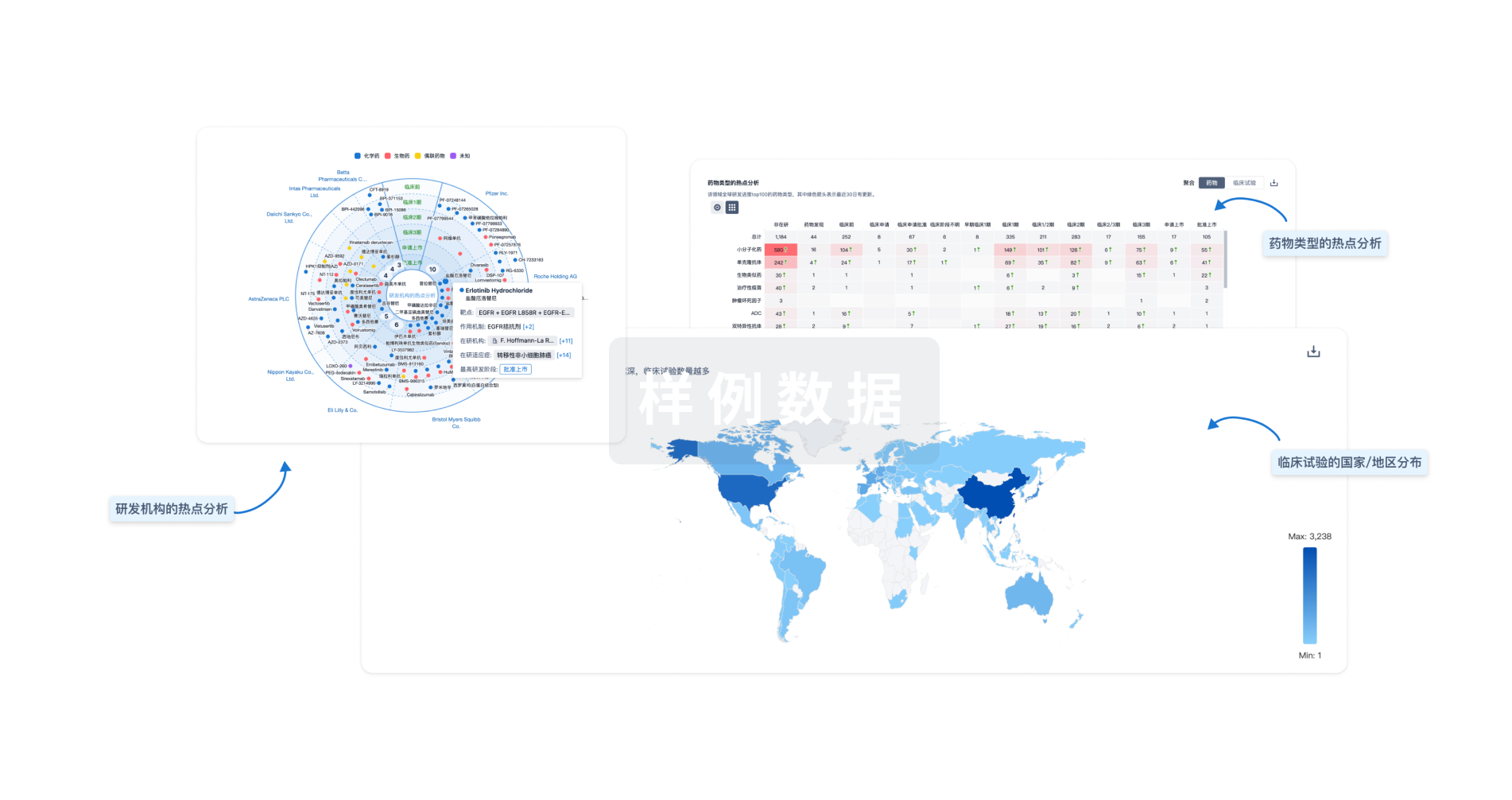
生物医药百科问答
全新生物医药AI Agent 覆盖科研全链路,让突破性发现快人一步
立即开始免费试用!
智慧芽新药情报库是智慧芽专为生命科学人士构建的基于AI的创新药情报平台,助您全方位提升您的研发与决策效率。
立即开始数据试用!
智慧芽新药库数据也通过智慧芽数据服务平台,以API或者数据包形式对外开放,助您更加充分利用智慧芽新药情报信息。
生物序列数据库
生物药研发创新
免费使用
化学结构数据库
小分子化药研发创新
免费使用


